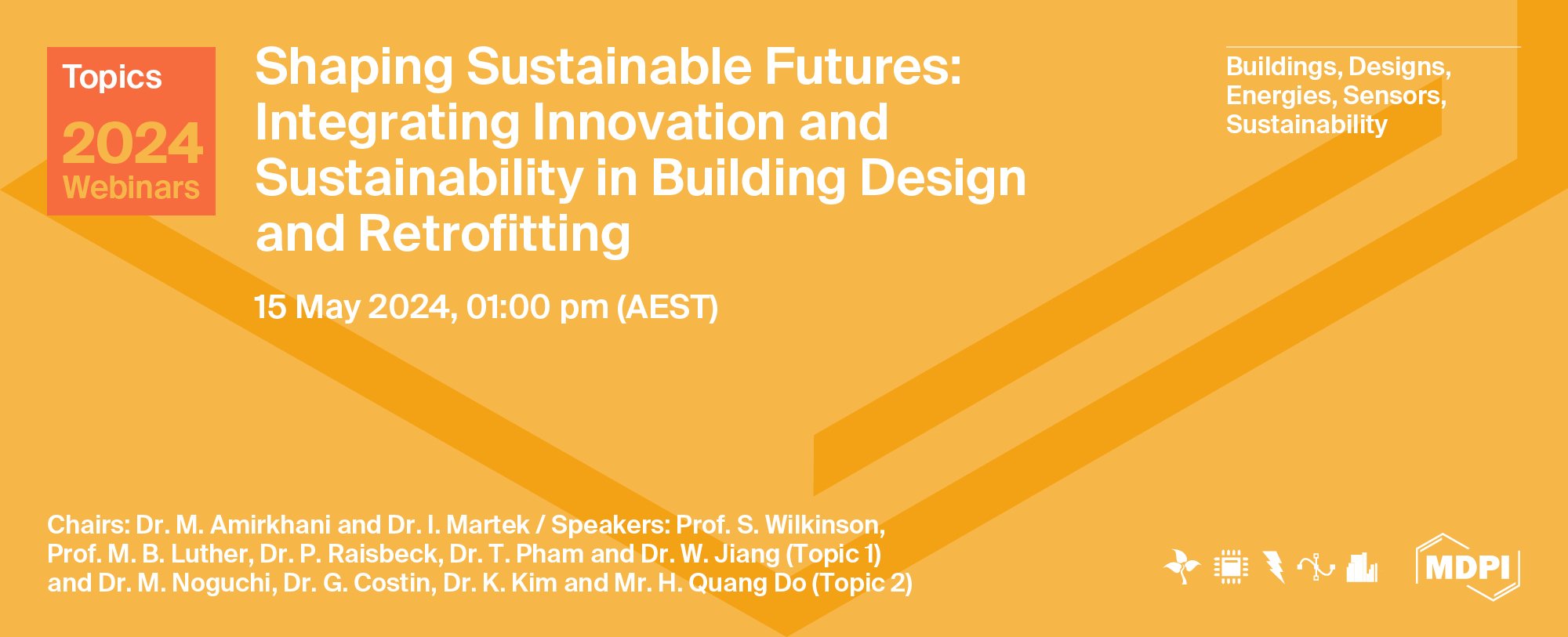-
 Advancing Urban Microclimate Monitoring: Development of a Low-Tech Environmental Station
Advancing Urban Microclimate Monitoring: Development of a Low-Tech Environmental Station -
 The Influence of Biowaste Type on the Characteristics of Corresponding Biochar Used as Sustainable Sorbent
The Influence of Biowaste Type on the Characteristics of Corresponding Biochar Used as Sustainable Sorbent -
 Categorization of the Potential Impact of Italian Quarries on Water Resources through a Multi-Criteria Decision Aiding-Based Model
Categorization of the Potential Impact of Italian Quarries on Water Resources through a Multi-Criteria Decision Aiding-Based Model -
 Cement Mortars Based on Polyamide Waste Modified with Fly Ash from Biomass Combustion—A New Material for Sustainable Construction
Cement Mortars Based on Polyamide Waste Modified with Fly Ash from Biomass Combustion—A New Material for Sustainable Construction -
 Formation, Characteristics, and Influencing Factors of the Plastisphere
Formation, Characteristics, and Influencing Factors of the Plastisphere
Journal Description
Sustainability
Sustainability
is an international, peer-reviewed, open-access journal on environmental, cultural, economic, and social sustainability of human beings, published semimonthly online by MDPI. The Canadian Urban Transit Research & Innovation Consortium (CUTRIC), International Council for Research and Innovation in Building and Construction (CIB) and Urban Land Institute (ULI) are affiliated with Sustainability and their members receive discounts on the article processing charges.
- Open Access— free for readers, with article processing charges (APC) paid by authors or their institutions.
- High Visibility: indexed within Scopus, SCIE and SSCI (Web of Science), GEOBASE, GeoRef, Inspec, AGRIS, RePEc, CAPlus / SciFinder, and other databases.
- Journal Rank: JCR - Q2 (Environmental Studies) / CiteScore - Q1 (Geography, Planning and Development)
- Rapid Publication: manuscripts are peer-reviewed and a first decision is provided to authors approximately 18.8 days after submission; acceptance to publication is undertaken in 3.6 days (median values for papers published in this journal in the second half of 2023).
- Recognition of Reviewers: reviewers who provide timely, thorough peer-review reports receive vouchers entitling them to a discount on the APC of their next publication in any MDPI journal, in appreciation of the work done.
- Testimonials: See what our editors and authors say about Sustainability.
- Companion journals for Sustainability include: World, Sustainable Chemistry, Conservation, Future Transportation, Architecture, Standards, Merits and Wind.
Impact Factor:
3.9 (2022);
5-Year Impact Factor:
4.0 (2022)
Latest Articles
Satisfaction Analysis of Urban Rail Transit Based on the Personal Characteristics of Passengers
Sustainability 2024, 16(9), 3665; https://0-doi-org.brum.beds.ac.uk/10.3390/su16093665 (registering DOI) - 26 Apr 2024
Abstract
The influence of passenger gender, age, educational background, and other personal characteristics on satisfaction with an urban rail transit was studied. In total, 6340 valid questionnaires were completed, and basic data about the passengers were statistically analyzed. Based on AHP and the fuzzy
[...] Read more.
The influence of passenger gender, age, educational background, and other personal characteristics on satisfaction with an urban rail transit was studied. In total, 6340 valid questionnaires were completed, and basic data about the passengers were statistically analyzed. Based on AHP and the fuzzy comprehensive evaluation method, 94.594 percent of passengers reported overall satisfaction with the Qingdao rail transit; the data for subgroups based on gender, age, and other aspects were also calculated. An independent samples t-test and one-way analysis of variance were used to analyze the correlations between passenger satisfaction and the following parameters: gender, age, education, occupation, income, ride frequency, and private car availability. The results show that women attach more importance to the caring they feel in the process of travel than men, and no significant difference exists in travel satisfaction between passengers with private cars and those without private cars (p > 0.05). Older passengers report more satisfaction than younger passengers. Additionally, for passengers with high education and high income, satisfaction is lower in terms of safety, convenience, and comfort and caring. There are also significant differences in the safety, convenience, comfort, and caring experienced across different occupational groups. These research results provide a theoretical basis for understanding how passengers with different backgrounds perceive the operational services of an urban rail transit with regard to service defects, the weaknesses in the operation process, and passenger satisfaction.
Full article
Open AccessArticle
Towards Sustainable Metal-to-Polymer Joining: A Comparative Study on Friction Stir Welding, Self-Piercing Riveting, and Adhesive Bonding
by
Ali A. Barakat, Aser A. Ahmed, Basil M. Darras and Mohammad A. Nazzal
Sustainability 2024, 16(9), 3664; https://0-doi-org.brum.beds.ac.uk/10.3390/su16093664 - 26 Apr 2024
Abstract
Friction stir welding (FSW) has gained increasing prominence in the realm of metal–plastic hybrid joints, yet its long-term sustainability remains a subject of uncertainty. This research investigates the sustainability aspect of FSW, positioning it against conventional techniques like adhesive bonding (AB) and self-piercing
[...] Read more.
Friction stir welding (FSW) has gained increasing prominence in the realm of metal–plastic hybrid joints, yet its long-term sustainability remains a subject of uncertainty. This research investigates the sustainability aspect of FSW, positioning it against conventional techniques like adhesive bonding (AB) and self-piercing riveting (SPR). A comprehensive evaluation framework encompassing environmental, social, economic, and physical factors was employed, through which specified criteria were applied to select pertinent sustainability indicators across all dimensions to ensure a thorough assessment. In this study, two advanced multi-criteria decision-making methods (MCDM) were deployed for data normalization and aggregation. Sensitivity analysis was conducted to examine the robustness of the results. The outcomes yielded a sustainability rating system, facilitating a direct and insightful comparison with traditional methods. Based on the results of this study, SPR outperforms both FSW and AB in terms of overall sustainability with comparative average sustainability scores of 75.3%, 54.2%, and 35.3%, respectively. This study not only sheds light on the current state of FSW sustainability but also provides a valuable benchmark for decision-makers in selecting environmentally conscious methods for metal–plastic hybrid joints.
Full article
Open AccessArticle
Tourists’ Willingness to Adopt AI in Hospitality—Assumption of Sustainability in Developing Countries
by
Tamara Gajić, Alireza Ranjbaran, Dragan Vukolić, Jovan Bugarčić, Ana Spasojević, Jelena Đorđević Boljanović, Duško Vujačić, Marija Mandarić, Marija Kostić, Dejan Sekulić, Marina Bugarčić, Bojana D. Drašković and Sandra R. Rakić
Sustainability 2024, 16(9), 3663; https://0-doi-org.brum.beds.ac.uk/10.3390/su16093663 - 26 Apr 2024
Abstract
This study explores the impact of artificial intelligence (AI) on customer perceptions and behavior in restaurants, airline companies, and hotel sectors within the hospitality industry of Iran. The primary objective is to analyze how AI affects customer trust, brand engagement, electronic word-of-mouth (eWOM),
[...] Read more.
This study explores the impact of artificial intelligence (AI) on customer perceptions and behavior in restaurants, airline companies, and hotel sectors within the hospitality industry of Iran. The primary objective is to analyze how AI affects customer trust, brand engagement, electronic word-of-mouth (eWOM), and tourists’ readiness to use AI technologies. Using a comparative analysis approach and surveys, this research tests hypotheses about the effects of artificial intelligence on various dimensions of customer interaction. The findings highlight significant relationships between the quality of artificial intelligence and customer engagement metrics, such as trust and brand loyalty, which are crucial for understanding and predicting customer behavior in response to technological advancements. This study lays the groundwork for theoretical assumptions about sustainability in these sectors in developing countries, providing a basis for future empirical research that could validate these assumptions and explore broader implications of AI integration in enhancing sustainable practices within the hospitality industry.
Full article
(This article belongs to the Special Issue Smart Technologies and Sustainable Development in Hospitality and Tourism)
Open AccessReview
Can Arbuscular Mycorrhizal Fungi Enhance Crop Productivity and Quality in Hydroponics? A Meta-Analysis
by
Yahia A. Othman, Kholoud M. Alananbeh and Monther M. Tahat
Sustainability 2024, 16(9), 3662; https://0-doi-org.brum.beds.ac.uk/10.3390/su16093662 - 26 Apr 2024
Abstract
Finding environmentally friendly solutions for crop growth and productivity has been gaining more attention recently. This meta-analysis aims to understand the combined application of arbuscular mycorrhizal fungi (AMF) and hydroponic systems compared to AMF in conventional (soil) systems. The analysis of up-to-date studies
[...] Read more.
Finding environmentally friendly solutions for crop growth and productivity has been gaining more attention recently. This meta-analysis aims to understand the combined application of arbuscular mycorrhizal fungi (AMF) and hydroponic systems compared to AMF in conventional (soil) systems. The analysis of up-to-date studies revealed that the root colonization, calculated as the proportion of colonized root segments relative to the total root length, by AMF in conventional (soil-based) culture exceeded hydroponic (or soilless) culture systems by 16.8%. The mean root colonization by AMF was determined to be 52.3% in hydroponic systems and 61.1% in conventional systems. Within hydroponic systems, the root colonization ranged from 2% to 20% after 10 days of inoculation, and notably, it exceeded 50% after 30 to 65 days, depending on the growing substrate and species. Under hydroponics, AMF application had a higher (compared to none-inoculated) positive effect on crop biomass and yield than fruit and leaf quality (antioxidants, phenols, and sugars) as well as leaf nutrients. However, AMF do not always have the potential to improve crop growth, quality and productivity in hydroponics. Among the studies analyzed in this review, approximately 34% (no effect: 29%; negative: 5%) reported no discernible positive effect on biomass or yield, 37% (no effect: 16%; negative: 21%) on fruit or leaf quality, and 60% (no effect: 47%; negative: 13%) on nutrient levels within plant tissues. To improve the performance of AMF in hydroponic systems, the meta-analysis recommended maintaining phosphorus levels in the nutrient solution within the range of 0.15 to 15.5 mg L−1 as elevated levels (40–75 mg L−1) were found to significantly reduce AMF colonization. Additionally, it was observed that certain hydroponic techniques, such as the presence of air bubbles generated by air pumps in floating hydroponic systems (Deep Flow technique) and continuous circulation of the nutrient solution (Ebb and Flow systems), may create dynamic conditions that could potentially hinder the introduction of AMF spores into hydroponic systems and potentially compromise the integrity of the spores and hyphae.
Full article
(This article belongs to the Special Issue Sustainable Agriculture for Crop Cultivation)
Open AccessArticle
Research on the Mechanism of Strength Improvement in Acid–Base-Activated Low Carbon Oil Absorbent Concrete
by
Dongli Wang, Zeyu Yang, Haojie Zheng, Ke Li, Huimin Pan and Tong Li
Sustainability 2024, 16(9), 3661; https://0-doi-org.brum.beds.ac.uk/10.3390/su16093661 - 26 Apr 2024
Abstract
The aim of this study is to improve the compressive strength of oil absorbent concrete (OAC) and to encourage its use in slope protection projects. This study used fly ash and slag produced in thermal power plants to substitute cement in significant amounts
[...] Read more.
The aim of this study is to improve the compressive strength of oil absorbent concrete (OAC) and to encourage its use in slope protection projects. This study used fly ash and slag produced in thermal power plants to substitute cement in significant amounts to prepare oil absorbent concrete (OAC). The water–cement ratios were set at 0.4, 0.5, and 0.6 and the sand rates were set at 30%, 35%, and 40% to investigate the effects of these factors on the oil absorption properties of the concrete, the variation of the oil absorption rate over time, and the compressive strengths at 28 days, 60 days, and 90 days. The compressive strength of oil absorbent concrete was improved by incorporating seashell powder (SC), alkali-modified seashell powder (SSC), and acid–base-modified seashell powder (CSC). The results showed that the optimal water–cement ratio for comprehensive oil absorption performance and compressive strength was 0.5, while the optimal sand ratio was 0.35. Compared with ordinary concrete, the oil absorption performance improved by 58.69%. The oil absorption rate decreased gradually over time. However, the oil absorption time could be effectively extended and the oil absorption performance could be improved by the addition of a silane modifier. The best method for seashell modification was acid–base modification. The compressive strength reached 14.32 Mpa at 28 days and 17.45 Mpa at 90 days, which was 19.62% higher than that of OAC. Scanning electron microscopy (SEM), mercury intrusion porosimetry (MIP), and X-ray diffraction (XRD) were used to analyze the microstructure of OAC. It was discovered that the inclusion of CSC caused a reaction with hydrocalumite in the concrete, resulting in the formation of alumohydrocalcite. Additionally, Ca(OH)2 in CSC facilitated the hydration reaction of mineral admixtures like fly ash and slag. At 28 days, more amorphous gels (C-S-H, C-(A)-S-H) and Aft were produced. The three components were combined to enhance the bonding between the cementitious materials and the aggregates, resulting in a denser internal structure of the OAC and improving its strength. This study promotes the use of OAC in slope protection projects.
Full article
(This article belongs to the Special Issue Porous Materials for Sustainable Futures)
Open AccessArticle
Cellulose-Based Waste in a Close Loop as an Adsorbent for Removing Dyes from Textile Industry Wastewater
by
Marija Vukčević, Marina Maletić, Biljana Pejić, Ana Kalijadis, Mirjana Kostić, Katarina Trivunac and Aleksandra Perić Grujić
Sustainability 2024, 16(9), 3660; https://0-doi-org.brum.beds.ac.uk/10.3390/su16093660 - 26 Apr 2024
Abstract
In an attempt to reuse fibrous textile waste and, at the same time, to address dye pollution in textile wastewater, waste cotton-based yarn was utilized as a cheap and sustainable adsorbent, as well as a row material for carbon adsorbent production. Unmodified yarn
[...] Read more.
In an attempt to reuse fibrous textile waste and, at the same time, to address dye pollution in textile wastewater, waste cotton-based yarn was utilized as a cheap and sustainable adsorbent, as well as a row material for carbon adsorbent production. Unmodified yarn and cotton-based carbon adsorbents were used as adsorbents for dye removal from water. Cotton and cotton/polyester yarn samples underwent thermal modification through carbonization followed by chemical activation with KOH. Various techniques, including scanning electron microscopy, Fourier transform infrared spectroscopy, nitrogen adsorption–desorption isotherms, and surface charge determination, were employed to analyze the morphological and surface characteristics of the cotton-based adsorbents. Adsorption properties were evaluated by testing the removal of selected cationic and anionic dyes from water. The impact of temperature, initial pH and concentration of the dye solution, and contact time on adsorption were investigated, and experimentally obtained data were analyzed using theoretical models. While carbonization alone did not significantly enhance adsorption properties, activated samples exhibited high efficacy in removing both cationic and anionic dyes from water. Despite the negative influence of the polyester component in the carbon precursor on the efficiency of activated samples in removing methyl orange, the results indicated that activated cotton and cotton/polyester yarn could be used to prepare highly efficient adsorbents for the rapid removal of methylene blue from real wastewater samples.
Full article
(This article belongs to the Special Issue Advances in Adsorption Processes for Sustainable Water Treatment)
Open AccessArticle
Impact of Ship Emission Control Area Policies on Port Air Quality—A Case Study of Ningbo Port, China
by
Siling Lu and Fan Zhou
Sustainability 2024, 16(9), 3659; https://0-doi-org.brum.beds.ac.uk/10.3390/su16093659 - 26 Apr 2024
Abstract
The implementation effectiveness of ship emission control area (ECA) policies can be effectively evaluated using econometric models. However, existing studies mainly focus on changes in SO2 concentrations in the air. In order to comprehensively assess the impact of ECA policies on air
[...] Read more.
The implementation effectiveness of ship emission control area (ECA) policies can be effectively evaluated using econometric models. However, existing studies mainly focus on changes in SO2 concentrations in the air. In order to comprehensively assess the impact of ECA policies on air quality, this study takes Ningbo Port in China as an example and uses a regression discontinuity (RD) model to analyze the influence of ship emissions around the wharf on concentrations of SO2, NO2, and particulate matter (PM) in the air. The results indicate that individual ships’ activities within the monitoring area (within 300 m) make a relatively small contribution to the concentration of SO2 in the air and do not form a significant breakpoint. However, there is a noticeable breakpoint in the concentration of NO2 around the monitoring point as the ship approaches. At the same time, the variation range of PM2.5 is significantly greater than that of PM10, which aligns with the characteristics of PM emitted by ships. The experimental results have passed three robustness tests, demonstrating that the current policy on ship ECAs has a positive limiting effect on SO2 emissions and, to some extent, reduces PM emissions. However, further reductions in ship emissions may require more restrictions in nitrogen oxide emissions.
Full article
(This article belongs to the Section Sustainable Transportation)
Open AccessArticle
Indigenous Knowledge for Sustainable Communications and Mobility: Perspectives from the Kolyma Road, Northeast Russia
by
Daria Burnasheva, Viktoria Filippova, Mariia Kuklina, Vera Kuklina and Antonina Savvinova
Sustainability 2024, 16(9), 3658; https://0-doi-org.brum.beds.ac.uk/10.3390/su16093658 - 26 Apr 2024
Abstract
In northeast Russia, the famous historic Kolyma Road spans two thousand kilometers across two federal subjects of the Russian Federation: the Sakha Republic (Yakutia) and Magadan Oblast. Thousands of people live along and in close proximity to the road, depending on it for
[...] Read more.
In northeast Russia, the famous historic Kolyma Road spans two thousand kilometers across two federal subjects of the Russian Federation: the Sakha Republic (Yakutia) and Magadan Oblast. Thousands of people live along and in close proximity to the road, depending on it for communication, mobility, goods, and life support. As the major transportation infrastructure in the entire region, it should be reliable and stable for local communities’ well-being. One strategic approach to ensure its reliability is to acknowledge the role of Indigenous knowledge, which has been neglected despite being established long before the emergence of existing formal systems of communication. Based on data collected through fieldwork, personal observations, and conversations, this paper aims to demonstrate that Indigenous knowledge regarding ways of living, moving, and communicating along and on the road is the key to sustainability in the region. As a result, we claim that this realization should be manifested in designing and implementing communication and mobility systems based on the principles of diversity, equity, and inclusion. In the long term, it is necessary to develop a sustainable road management system for the Kolyma Road to ensure the security and well-being of local communities and for everyone visiting and working on the road.
Full article
(This article belongs to the Section Social Ecology and Sustainability)
Open AccessArticle
Coupling and Coordination between Tourism, the Environment and Carbon Emissions in the Tibetan Plateau
by
Jiayuan Wang, Lin Yi, Lingling Chen, Yanbing Hou, Qi Zhang and Xuming Yang
Sustainability 2024, 16(9), 3657; https://0-doi-org.brum.beds.ac.uk/10.3390/su16093657 - 26 Apr 2024
Abstract
►▼
Show Figures
Studying the relationships among tourism, the environment and carbon emissions is key to understanding how tourism activity affects the sustainable development of tourism in the Tibetan Plateau. Using Lhasa, Tibet, as a case study, the coupling and coordination relationships among the three systems
[...] Read more.
Studying the relationships among tourism, the environment and carbon emissions is key to understanding how tourism activity affects the sustainable development of tourism in the Tibetan Plateau. Using Lhasa, Tibet, as a case study, the coupling and coordination relationships among the three systems were analysed to explore the impact of tourism behaviour on sustainable tourism development. Utilising panel data from 2010 to 2020, the carbon emissions of tourism activities were calculated using a bottom-up approach. The coupling coordination model was employed to examine the interrelationship of the economy, the ecological environment and carbon emissions. Additionally, the Tapio model was utilised to further analyse the dependency relationship between economic development and carbon emissions. This assessment of the sustainability of Lhasa’s tourism industry revealed that (1) the economy, the environment and carbon emissions are indeed closely intertwined with sustainable development and that (2) there has been a significant increase in the coupling coordination among the economy, the environment and carbon emissions from 2010 to 2020, coupled with a gradual decrease in economic dependency on carbon emissions. Despite providing favourable conditions for sustainable development, there remains considerable disparity among the three subsystems, with relatively low overall coordination. Accordingly, some practical low-carbon tourism policies are recommended to guide tourism practices and promote long-term sustainability.
Full article

Figure 1
Open AccessArticle
Quantitative Assessment of the Impact of the Three-North Shelter Forest Program on Vegetation Net Primary Productivity over the Past Two Decades and Its Environmental Benefits in China
by
Junling Zhang and Yifei Zhang
Sustainability 2024, 16(9), 3656; https://0-doi-org.brum.beds.ac.uk/10.3390/su16093656 - 26 Apr 2024
Abstract
►▼
Show Figures
Vegetation net primary productivity (NPP) is a crucial indicator for assessing the carbon balance in terrestrial ecosystems. Qualitative and comparative research on the NPP influenced by human activities, climate change, and their interactions remains insufficient. The Three-North Shelter Forest Program (TNSFP), initiated in
[...] Read more.
Vegetation net primary productivity (NPP) is a crucial indicator for assessing the carbon balance in terrestrial ecosystems. Qualitative and comparative research on the NPP influenced by human activities, climate change, and their interactions remains insufficient. The Three-North Shelter Forest Program (TNSFP), initiated in 1978, provides a valuable reference for such investigations. This study employs an improved residual trend method to analyze the spatiotemporal patterns, trends, and driving factors of vegetation NPP during the second phase of the Three-North Shelter Forest Program (2001–2020), as well as TNSFP’s contribution to vegetation NPP. The results indicate that (1) from 2001 to 2020, overall vegetation NPP exhibited a significant fluctuating upward trend at a rate of 3.69 g C/m−2 annually; and (2) precipitation, accounting for 1.527 g C/m−2, had a more significant impact on vegetation net productivity compared to temperature (0.002 g C/m−2). Climate factors (76%) significantly influenced vegetation NPP in the Three-North Shelter Forest region more than human activities (24%). In the last decade (2011–2020), the climate contribution rate decreased to 67%, while the human activity contribution rate increased by seven percentage points compared to the previous decade (2001–2010); (3) during 2001–2020, TNSFP contributed 10.9% to the total human activity contribution to vegetation net primary productivity, approximately 2.6% of the overall contribution; (4) After the second phase of TNSFP was enacted, PM2.5 levels decreased by an average of −0.57 μg/m−3/a−1. Concurrently, soil conservation improved from 6.57 t/km2 in 2001 to 14.37 t/km2 in 2020.
Full article
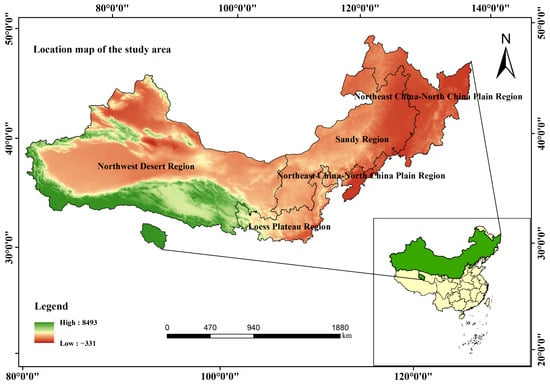
Figure 1
Open AccessArticle
Incremental Green Investment Rule Induction Using Intelligent Rough Sets from an Energy Perspective
by
Chun-Che Huang, Wen-Yau Liang, Horng-Fu Chuang, Tzu-Liang (Bill) Tseng and Yi-Chun Shen
Sustainability 2024, 16(9), 3655; https://0-doi-org.brum.beds.ac.uk/10.3390/su16093655 - 26 Apr 2024
Abstract
The United Nations Sustainable Development Goals (SDGs) agenda has stated the importance of green investment. Energy-related green investment involves intricate economic behavior and ecological objectives. Green investment definitely requires agile decisions, e.g., rule-based decisions, to respond to changes outside the country. The identification
[...] Read more.
The United Nations Sustainable Development Goals (SDGs) agenda has stated the importance of green investment. Energy-related green investment involves intricate economic behavior and ecological objectives. Green investment definitely requires agile decisions, e.g., rule-based decisions, to respond to changes outside the country. The identification of significant rules with numerous result features and the assurance of the stability and robustness of the rules in decision-making are crucial for green energy investment. The rough set (RS) methodology works well for processing qualitative data that are difficult to examine with traditional statistical methods in order to induce decision rules. The RS methodology starts with the analysis of the limits of discernibility of a subset of objects belonging to the domain to induce rules. However, traditional RS methods cannot incrementally generate rules with outcome features when new objects are added, which frequently occurs in green energy investment with the inclusion of big data. In this paper, an intelligent RS approach is proposed. This approach effectively identifies the rules that either stay the same or are altered based on four classified cases after a new object is introduced; it is novel because it can deal with a complicated investment environment by imposing multiple outcome features, specifically when it is required to flexibly extract new decision rules via adding new data sets.
Full article
(This article belongs to the Special Issue Going Smart: Integrating Artificial Neural Network in the Energy Domain)
Open AccessArticle
Dynamic Response of Steel–Timber Composite Beams with Varying Screw Spacing
by
Małgorzata Abramowicz, Marcin Chybiński, Łukasz Polus, Piotr Szewczyk and Tomasz Wróblewski
Sustainability 2024, 16(9), 3654; https://0-doi-org.brum.beds.ac.uk/10.3390/su16093654 - 26 Apr 2024
Abstract
Steel–timber composite beams are a relatively new type of composite structure. They have many important advantages, owing to which they may be considered a sustainable solution. Their connectors may be demountable, which makes it possible to separate steel girders from LVL panels at
[...] Read more.
Steel–timber composite beams are a relatively new type of composite structure. They have many important advantages, owing to which they may be considered a sustainable solution. Their connectors may be demountable, which makes it possible to separate steel girders from LVL panels at the end of their service life. After disassembly, the structural elements can be recycled. One of their advantages is that they are lighter than steel–concrete composite beams. However, this may result in the poor performance of floors with steel–timber composite elements subjected to dynamic loadings. For this reason, the dynamic characteristics of floors should be investigated to verify the serviceability limit state of human-induced vibrations. In this study, the dynamic response of the three steel–timber composite beams with varying screw spacing was captured and used to validate their numerical models. The frequencies obtained from the numerical analyses correspond to the experimental results. A very high agreement between the vibration mode shapes was obtained because the MAC index values were close to 1. The validated numerical model of a single steel–timber beam may be used in future studies to create a complex numerical model of a steel–timber composite floor.
Full article
Open AccessArticle
Geomorphological and Bioclimatic Relationships in the Occurrence of Species of Agro-Extractivist Interest in the Cerrado Biome
by
Renan Augusto Miranda Matias, Alba Valéria Rezende, Anderson Cássio Sevilha, Aldicir Osni Scariot, Eraldo Aparecido Trondoli Matricardi and Levi Carina Terribile
Sustainability 2024, 16(9), 3653; https://0-doi-org.brum.beds.ac.uk/10.3390/su16093653 - 26 Apr 2024
Abstract
The distribution of species of agro-extractivist interest and their ecological relationship with the physical environment geomorphological and bioclimatic allow supporting strategies aimed at socioeconomic and environmental development. We evaluated the contribution of high spatial resolution topographic variables in ecological niche models and the
[...] Read more.
The distribution of species of agro-extractivist interest and their ecological relationship with the physical environment geomorphological and bioclimatic allow supporting strategies aimed at socioeconomic and environmental development. We evaluated the contribution of high spatial resolution topographic variables in ecological niche models and the relationship of the distribution of five tree species with the geomorphological units and bioclimatic variables. The variables related to temperature variation and water availability proved to be important in predicting the areas of occurrence of the target species, with increased suitability of occurrence in regions with higher isothermality, located in the plateau and table geomorphological units. The predictions showed a significant difference when high spatial resolution variables were used, generating a more conservative scenario in the indication of suitable regions for the occurrence of species, important for local scale studies. The geomorphological units of plateau and tableland showed high suitability of occurrence, while the fluvial plains and dissected depressions did not present suitability for the occurrence of the species. The results allow us to strategically define areas with the greatest productive potential and prioritize areas for conservation, management, ecological restoration of forests, and targeting areas for the implementation of community agro-industries, essential for territorial planning within traditional communities.
Full article
(This article belongs to the Special Issue Sustainability for Social Community Impact)
►▼
Show Figures
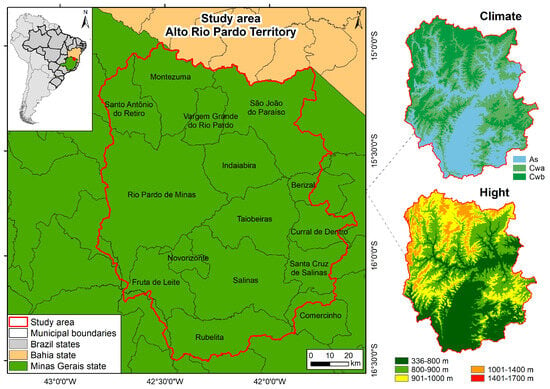
Figure 1
Open AccessArticle
The Importance of Resilient, Health-Promoting, and Accessible Cultural Landscapes Using the Example of One Suburb of Gdańsk, Poland
by
Monika Trojanowska
Sustainability 2024, 16(9), 3652; https://0-doi-org.brum.beds.ac.uk/10.3390/su16093652 - 26 Apr 2024
Abstract
The urban green public spaces “UGSs” provide a place for everyday contact with nature to humans. Green and blue infrastructure is important for urban heat mitigation. This study focuses on the relationship between satisfaction with the place of living and quality of life
[...] Read more.
The urban green public spaces “UGSs” provide a place for everyday contact with nature to humans. Green and blue infrastructure is important for urban heat mitigation. This study focuses on the relationship between satisfaction with the place of living and quality of life indexes, accessibility, and the quality of public green spaces in one of the suburbs of Gdańsk in Poland. Even though there are award-winning public parks and a large-scale Tri-city Landscape Park, the individual indexes measuring the satisfaction of local inhabitants with accessibility to public parks and their quality were well beyond the average in Gdańsk. The research question was to explain such low satisfaction with green public parks and spaces in Gdańsk-Osowa. The results of the evaluation of available “UGSs” against the universal standard for health-promoting urban places confirmed their recreational value but also demonstrated limited spatial and physical accessibility and possible overcrowding. Thus, the possibilities for everyday contact with nature for numerous inhabitants are limited and that condition may influence the life quality indexes. The results suggest that increasing urban density and the further development of residential neighborhoods requires careful planning of new public parks in consideration of proximity to public open green spaces. The accessibility of public parks within walking distance is crucial when planning new developments.
Full article
(This article belongs to the Special Issue Resilient Cultural Landscapes—Methods, Applications and Patterns)
►▼
Show Figures
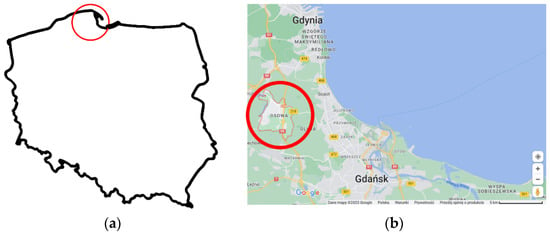
Figure 1
Open AccessArticle
A Sustainable Residential Building Model in North Iraq by Considering Occupant Behaviour, Sociocultural Needs, and the Impact on Energy Use
by
Diler Haji Morad Aldoski and Harun Sevinc
Sustainability 2024, 16(9), 3651; https://0-doi-org.brum.beds.ac.uk/10.3390/su16093651 - 26 Apr 2024
Abstract
Sustainable design, which aims to reduce energy consumption and mitigate climate change, is a primary concern of developing countries. Hence, it reduces CO2 emissions. Residential buildings in North Iraq account for approximately 69% of all electricity consumed. To mitigate this issue, this
[...] Read more.
Sustainable design, which aims to reduce energy consumption and mitigate climate change, is a primary concern of developing countries. Hence, it reduces CO2 emissions. Residential buildings in North Iraq account for approximately 69% of all electricity consumed. To mitigate this issue, this article investigates the design of a sustainable model by considering the local climate, building design occupant behaviour, and sociocultural needs in the region and their impact on energy use. This study used mixed research methods to develop a sustainable single-family house model in semi-arid climates, specifically Erbil (North Iraq), the process consisted of three phases. Phase One saw the collection of all data from analysed literature, observation, worship, case study simulations of the base, and an improved model. Phase Two defined the guidelines for creating sustainable model dwellings based on the main findings in Phase One. Phase Three created a prototype to evaluate the sustainable model, primarily focusing on meeting people’s design preferences while avoiding privacy concerns. In addition, DesignBuilder Software simulation was used to examine the impact of occupancy behaviour (based on local culture and traditions) on the building’s energy performance throughout two phases. In the first step, three occupancy profile types are compared with real-life study bills. These profiles were the base case, which came from an actual case; the statistical profile from surveys; and the international standard ASHRAE 90.1, which was used as the default. The second phase compared the base model with an improved model and developed a sustainable prototype that satisfies local climate and sociocultural needs. The result indicated that the standard occupant profile significantly differs from the actual bill by 40%, whereas the statistical profile and base case reduce the gap to 11% and 4%, respectively. The sustainable prototype model can enhance operative temperature by 4 °C and decrease total energy use by 50% compared to the base case model. Data also showed that occupants keep lights on even when rooms are unoccupied. Therefore, when designing sustainable dwellings, it is crucial to consider occupant behaviour and their sociocultural needs, as they have a significant impact on energy use as a result of their activity patterns and schedules. These factors should be considered in the local code.
Full article
(This article belongs to the Special Issue Urban Climate Adaptability of Buildings: Theories, Methodologies and Cases)
Open AccessArticle
Mitigating the Impact of Harmful Algal Blooms on Aquaculture Using Technological Interventions: Case Study on a South African Farm
by
Tahmina Ajmal, Fazeel Mohammed, Martin S. Goodchild, Jipsy Sudarsanan and Sarah Halse
Sustainability 2024, 16(9), 3650; https://0-doi-org.brum.beds.ac.uk/10.3390/su16093650 - 26 Apr 2024
Abstract
Seafood, especially from the ocean, is now seen as a greener and more sustainable source of protein, causing an increase in its demand. This has also led to people making choices towards seafood as a replacement for carbon-intensive protein sources. As a result,
[...] Read more.
Seafood, especially from the ocean, is now seen as a greener and more sustainable source of protein, causing an increase in its demand. This has also led to people making choices towards seafood as a replacement for carbon-intensive protein sources. As a result, the demand for seafood is growing, and as the aquaculture industry looks to increase production, keeping products safe and sustainable is imperative. There are many challenges faced by the aquaculture industry in meeting these increased demands. One such challenge is the presence of harmful algal blooms (HABs) in the ocean, which can have a major impact on aquatic life. In this paper, we look at the impact of this challenge on aquaculture and monitoring strategies whilst illustrating the potential for technological interventions to help mitigate the impact of an HAB. We will focus on Abagold Limited, a land-based marine aquaculture business that specialises in the large-scale production of abalone (Haliotis midae) based in Hermanus, South Africa. HABs are considered a threat to commercial-scale abalone farming along the South African coastline and require continuous monitoring. The most recent HAB was in February–April 2019, when the area experienced a severe red-tide event with blooms of predominantly Lingulodinium polyedrum. We present some of the monitoring strategies employing digital technologies to future-proof the industry. This article presents the development of a novel hybrid water quality forecasting model based on a TriLux multi-parameter sensor to monitor key water quality parameters. The actual experimental real water quality data from Abagold Limited show a good correlation as a basis for a forecasting model which would be a useful tool for the management of HABs in the aquaculture industry.
Full article
(This article belongs to the Special Issue Sustainability in Water Resources, Water Quality, and Architecture)
►▼
Show Figures

Figure 1
Open AccessArticle
Developmental Characteristics and Genesis of Ground Fissures in Wangjiacun, Emei Plateau, Yuncheng Basin, China
by
Feida Li, Feiyong Wang, Fujiang Wang and Guoqing Li
Sustainability 2024, 16(9), 3649; https://0-doi-org.brum.beds.ac.uk/10.3390/su16093649 - 26 Apr 2024
Abstract
The Yuncheng Basin is part of the Fenwei Graben System, which has developed ground fissure hazards that have caused serious damage to farmland, houses, and roads and have brought about huge economic losses. Located in Wanrong County on the Emei Plateau in the
[...] Read more.
The Yuncheng Basin is part of the Fenwei Graben System, which has developed ground fissure hazards that have caused serious damage to farmland, houses, and roads and have brought about huge economic losses. Located in Wanrong County on the Emei Plateau in the northwestern part of the Yuncheng Basin in China, the Wangjiacun ground fissure is a typical and special ground fissure developed in loess areas, and its formation is closely related to tectonic joints and the collapsibility of loess. In order to reveal the formation and genesis of the Wangjiacun ground fissure, the geological background, developmental characteristics, and genesis pattern of the Wangjiacun ground fissures were studied in detail. A total of three ground fissures have developed in this area: a linear fissure (f1) is distributed in an NNE-SSW direction, with a total length of 334 m; a circular fissure (f2) is located near the pool, with a total length of 720 m; f2-1, a linear fissure near f2, has a fissure length of 110 m and an NE orientation. This study shows that tectonic joints in loess areas are the main controlling factors of the linear fissure (f1); differential subsidence in the pool caused by collapsible loess is the main source of motivation for the formation of the circular fissures (f2, f2-1), and tensile stresses produced by the edges of subsidence funnels lead to the cracking of shallow rock and soil bodies to form ground fissures (f2, f2-1). This study enriches the theory of ground fissure genesis and is of great significance for disaster prevention and the mitigation of ground fissures in loess areas.
Full article
Open AccessArticle
Optimization Based on Computational Fluid Dynamics and Machine Learning for the Performance of Diffuser-Augmented Wind Turbines with Inlet Shrouds
by
Po-Wen Hwang, Jia-Heng Wu and Yuan-Jen Chang
Sustainability 2024, 16(9), 3648; https://0-doi-org.brum.beds.ac.uk/10.3390/su16093648 - 26 Apr 2024
Abstract
A methodology that could reduce computational cost and time, combining computational fluid dynamics (CFD) simulations, neural networks, and genetic algorithms to determine a diffuser-augmented wind turbine (DAWT) design is proposed. The specific approach used implements a CFD simulation validated with experimental data, and
[...] Read more.
A methodology that could reduce computational cost and time, combining computational fluid dynamics (CFD) simulations, neural networks, and genetic algorithms to determine a diffuser-augmented wind turbine (DAWT) design is proposed. The specific approach used implements a CFD simulation validated with experimental data, and key parameters are analyzed to generate datasets for the relevant mathematical model established with the backpropagation neural network algorithm. Then, the mathematical model is used with the non-dominant sorting genetic algorithm II to optimize the design and improve the DAWT design to overcome negative constraints such as noise and low energy density. The key parameters adopted are the diffuser’s flange height/angle, the diffuser’s length, and the rotor’s axial position. It was found that the impact of the rotor’s axial position on the power output of the DAWT is the most significant parameter, and a well-designed diffuser requires accelerating the airflow while maintaining high-pressure recovery. Introducing a diffuser can suppress the wind turbine’s noise, but if the induced tip vortex is too strong, it will have the opposite effect on the noise reduction.
Full article
(This article belongs to the Special Issue Application of Green Energy Technology in Sustainable Environment)
►▼
Show Figures
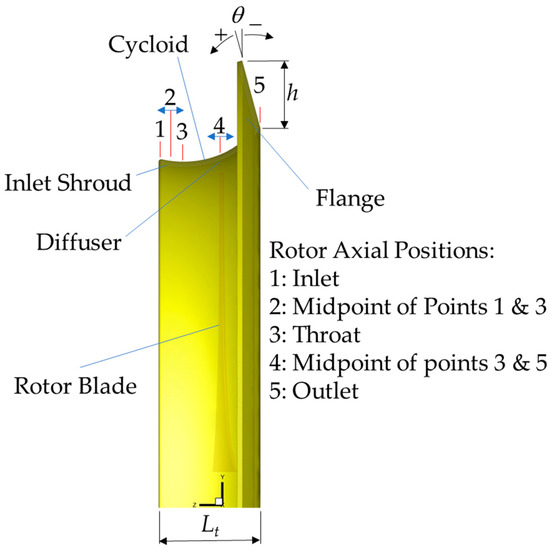
Figure 1
Open AccessArticle
Exogenous, Endogenous, and Peripheral Actors: A Situational Analysis of Stakeholder Inclusion within Transboundary Water Governance
by
Hannah Whitley
Sustainability 2024, 16(9), 3647; https://0-doi-org.brum.beds.ac.uk/10.3390/su16093647 - 26 Apr 2024
Abstract
Transboundary water governance involves collaborative decision-making across geopolitical boundaries to manage shared water resources sustainably. While this approach integrates public, private, and community efforts, little scrutiny has been directed toward the involvement of non-institutionally affiliated stakeholders. This study critically examines stakeholder participation in
[...] Read more.
Transboundary water governance involves collaborative decision-making across geopolitical boundaries to manage shared water resources sustainably. While this approach integrates public, private, and community efforts, little scrutiny has been directed toward the involvement of non-institutionally affiliated stakeholders. This study critically examines stakeholder participation in Upper Klamath Basin water governance by investigating how deficiencies in stakeholder inclusion impede transboundary water management processes by favoring institutionally affiliated actors. Findings reveal the differential influence of “endogenous” (directly involved), “exogenous” (indirectly involved), and “peripheral” (limited engagement and influence) actors. While endogenous and exogenous actors have formal or informal ties to institutions, peripheral actors lack institutional affiliation(s), making it difficult for them to participate in and ultimately influence water governance decision-making processes. Their limited access to financial, natural, and social capital further restricts their engagement with governance efforts. This imbalance underscores challenges to equity and inclusion in transboundary water governance processes. Addressing the exclusion of peripheral actors from transboundary water governance requires that governance institutions prioritize equity and inclusivity, fostering transparency, incentivizing inclusive practices, and comparing engagement processes to enhance effectiveness and equity in transboundary water management.
Full article
(This article belongs to the Special Issue Transdisciplinary Perspectives on Environment and Communication)
►▼
Show Figures

Figure 1
Open AccessArticle
Distribution and Stabilisation Mechanisms of Stable Landslide Dams
by
Liang Song, Yunsheng Wang, Yuchao Zhao, Zhuolin Xiao, Zhuo Feng, Shicheng Liu and Tao Tang
Sustainability 2024, 16(9), 3646; https://0-doi-org.brum.beds.ac.uk/10.3390/su16093646 - 26 Apr 2024
Abstract
►▼
Show Figures
Landslide dams, especially stable landslide dams, have been recognised as important contributors to regional geomorphological evolution. The eastern edge of the Tibetan Plateau provides good conditions for the formation of stable landslide dams. To identify stable landslide dams on the eastern margin of
[...] Read more.
Landslide dams, especially stable landslide dams, have been recognised as important contributors to regional geomorphological evolution. The eastern edge of the Tibetan Plateau provides good conditions for the formation of stable landslide dams. To identify stable landslide dams on the eastern margin of the Tibetan Plateau, the Google Earth Engine (GEE) was first used to map water surfaces in the study area. Then, stable landslide dams were identified using high-precision remote sensing images provided by Google Earth. A field investigation and a sampling of typical stable landslide dams were also adopted to characterise the landslide dams. The results show that 101 stable landslide dams are present in the study area, covering an area of 27.75 × 104 km2. There are four types of stable landslide dams, as follows: (1) landslides, (2) rock avalanches, (3) moraines, and (4) debris flows. The morphological parameters of a dam, which include dam height, dam width, dam volume, and catchment area, can be fitted with different relationship curves, with respect to the number of landslide dams. The source areas of landslide dams are generally located in the upper-middle and upper sections of adjacent mountains. The stability of a landslide dam is mainly controlled by the structure of the dam and the relationship between the dam volume and catchment area. Structurally, large rocks with large particle sizes are difficult to activate using river water and the large gaps between the rocks provide sufficient channels for the flow of river water. In regard to the relationship between the dam volume and catchment area, a river with a small catchment area in the study area is commonly blocked by a large dam volume. This study provides a unique opportunity to study the spatial distribution and clarify the factors influencing the stability of stable landslide dams.
Full article
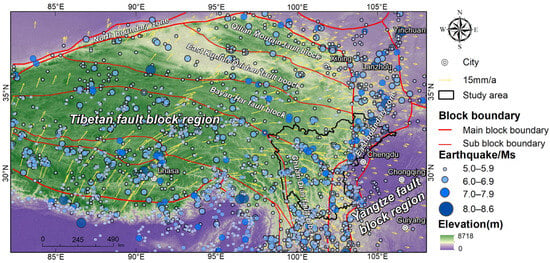
Figure 1

Journal Menu
► ▼ Journal Menu-
- Sustainability Home
- Aims & Scope
- Editorial Board
- Reviewer Board
- Topical Advisory Panel
- Instructions for Authors
- Special Issues
- Topics
- Sections & Collections
- Article Processing Charge
- Indexing & Archiving
- Editor’s Choice Articles
- Most Cited & Viewed
- Journal Statistics
- Journal History
- Journal Awards
- Society Collaborations
- Conferences
- Editorial Office
Journal Browser
► ▼ Journal BrowserHighly Accessed Articles
Latest Books
E-Mail Alert
News
Topics
Topic in
Energies, Fluids, JMSE, Sustainability, Water
Advances in Environmental Hydraulics
Topic Editors: Helena M. Ramos, Juan Antonio Rodríguez Díaz, Jorge MatosDeadline: 30 April 2024
Topic in
Buildings, Infrastructures, Materials, Smart Cities, Sustainability
Smart Material and Smart Construction Technologies for Urban Development
Topic Editors: Sathees Nava, Kate NguyenDeadline: 14 May 2024
Topic in
Energies, Materials, Processes, Solar, Sustainability
Solar Thermal Energy and Photovoltaic Systems, 2nd Volume
Topic Editors: Pedro Dinis Gaspar, Pedro Dinho da Silva, Luís C. PiresDeadline: 31 May 2024
Topic in
Education Sciences, Entropy, JAL, Societies, Sustainability
Sustainability in Aging and Depopulation Societies
Topic Editors: Shiro Horiuchi, Gregor Wolbring, Takeshi MatsudaDeadline: 15 June 2024

Conferences
Special Issues
Special Issue in
Sustainability
Fiber-Reinforced Composites for New Construction and Rehabilitation of Existing Structures
Guest Editors: Tamer El Maaddawy, Farid AbedDeadline: 27 April 2024
Special Issue in
Sustainability
Nature-Based Solutions as Sustainable Engineering for Improving Water Security
Guest Editor: Kristian L. DubrawskiDeadline: 30 April 2024
Special Issue in
Sustainability
Market Potential for Carsharing Services
Guest Editor: Lucia RotarisDeadline: 25 May 2024
Special Issue in
Sustainability
Sustainability and Indoor Environmental Quality
Guest Editors: Mateja Dovjak, Janja Vaupotic, Fumito Maruyama, So FujiyoshiDeadline: 31 May 2024
Topical Collections
Topical Collection in
Sustainability
Tourism Research and Regional Sciences
Collection Editors: Lóránt Dénes Dávid, Laszlo VASA, Setiawan Priatmoko
Topical Collection in
Sustainability
Mobile Technology, Gamification and Artificial Intelligence to Improve Sustainability in Education
Collection Editors: Eloy López Meneses, Esteban Vázquez-Cano, María Elena Parra-González
Topical Collection in
Sustainability
Urban Planning and Built Environment
Collection Editors: Yupeng Wang, Liyang Fan, Shi-Jie Cao, Xilian Luo
Topical Collection in
Sustainability
Sustainable Soil Management in a Changing Climate
Collection Editors: Georgios Koubouris, José Alfonso Gómez, Luuk Fleskens, Giuseppe Montanaro



